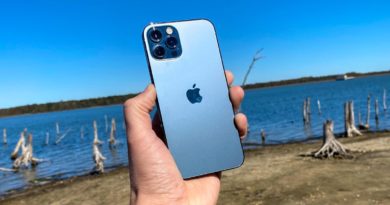Samsung reportedly working on 600MP camera — but that won’t beat iPhone 13
With the smartphone market as competitive as it is, one way to stand out from the crowd of rival devices is with big numbers. And there aren’t any numbers bigger than the 600MP camera supposedly in the works at Samsung.
The rumored camera sounds impressive, sure, but increasing resolution to such extreme lengths isn’t going to help Samsung’s cameras catch up to rivals like Apple and Google.
Earlier this year we heard some rumors about Samsung developing the 600MP camera sensor, with noted Twitter leaker Ice Universe specifically mentioning how it was supposed to exceed the 500MP equivalent resolution of a human eye. But at the time we could only take the leaker’s word for it, because there was no actual evidence of the camera’s existence.
Now things have changed,. Taking to Twitter once more, Ice Universe posted an internal Samsung slide detailing the 600MP camera lens. More importantly, the slide features the camera on the back of a smartphone — suggesting Samsung has grand plans to seriously boost the resolution of a future Galaxy smartphone.
Samsung is really doing 600MP sensors! pic.twitter.com/vGgsfxsGGhDecember 5, 2020
As you can see in the slide, this absurdly big sensor is designed to let people zoom in on 4K and 8K videos without losing image quality in the process. Which is exactly how high resolution works. It doesn’t do anything about picture quality, it just means you can zoom in further without your image becoming blurry and pixelated.
Being able to capture larger images has its advantages, but on its own, resolution doesn’t automatically make a good image. For starters, higher resolution means larger file sizes, which can be problematic if they can’t be compressed properly. It also ignores the importance of other camera features, and in particular computational photography — something both Google and Apple have had great success with.
How Samsung cameras compare to Google, Apple
In particular, Google’s Pixel phones have been championing this for a long time, with Google even deciding that its camera processing software was so good, the Pixel 3 didn’t need to follow the multi-lens camera trend. Google eventually did include a second lens with the Pixel 4 and Pixel 5, but the focus on computational photography and post-snap processing has remained strong with those phones.
Likewise, Apple’s Deep Fusion image processing, which debuted on the iPhone 11, has been able to process images automatically, and improves the detail and overall quality after you hit the shutter button.
We’re also hearing rumors about the camera planned for next year’s iPhone 13, which may involve a larger sensor. That means more light comes into the camera, while larger pixels improves the quality of the final image. High resolution may be great for zooming in, but the fact it has to use smaller pixels to accomplish that means non-zoomed images don’t look as good.
Smartphone cameras need more than just megapixels
Of course Samsung’s 600MP lens isn’t making its way to a smartphone anytime soon. For starters it’s way too big — at a reported 22mm thick, it’s two and a half times thicker than the 8.8mm Samsung Galaxy S20 Ultra. Secondly, Samsung makes more than just phones, and this tech could have applications in other industries before anyone even considers adding it to a commercial handset.
But the suggestion of adding more megapixels to its cameras is indicative of a bigger problem at Samsung. The phone maker already offers the highest resolution of any other smartphone camera with the 108MP main lens on the Galaxy S20 Ultra and Note 20 Ultra. But Samsung has set its sights bigger, with rumors that 150MP and 180MP lenses that are about ready to come to a Samsung smartphone.
It would be better for Samsung to shift its focus to other ways of improving phone cameras. Nobody can deny that the company jumped ahead of rival phone makers in resolution power, but as we’ve seen time and time again over the years, resolution isn’t everything. That’s why the Galaxy Note 20 Ultra is fourth on our list of the best camera phones — behind the iPhone 12 Pro Max, Pixel 5, and iPhone 12.
The 600MP camera is already in development, so there’s no stopping it from arriving someday, even if we don’t know what device will feature it. But that doesn’t mean Samsung can’t slow down the areas of development pertaining to smartphones. Some competitors with similar resolution obsessions may start catching up, but given the extraordinary lead Samsung has, it can definitely afford to take some time to focus on other things -— like computational photography.
If Samsung doesn’t, they risk falling behind even further, because all the resolution in the world can’t match up to a better-balanced camera.

